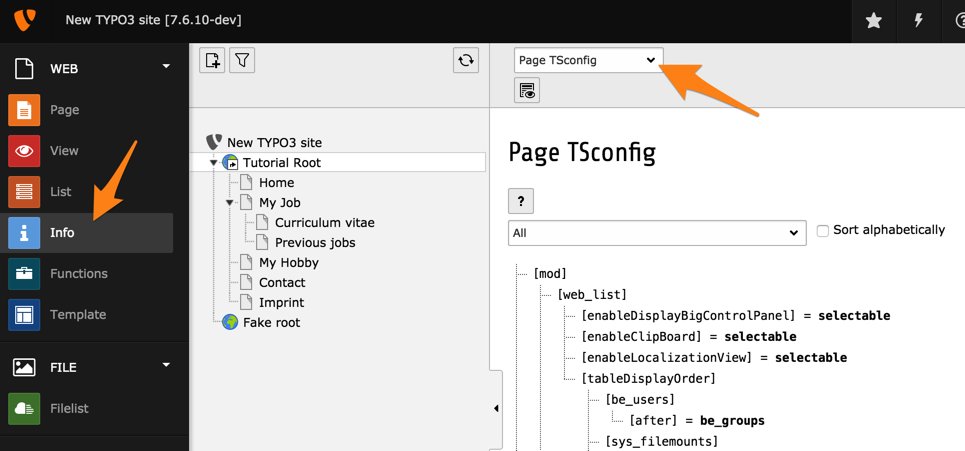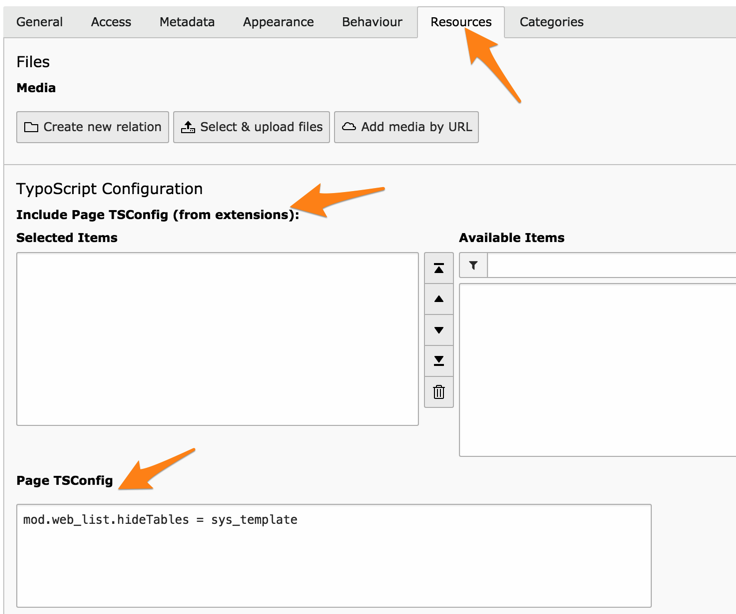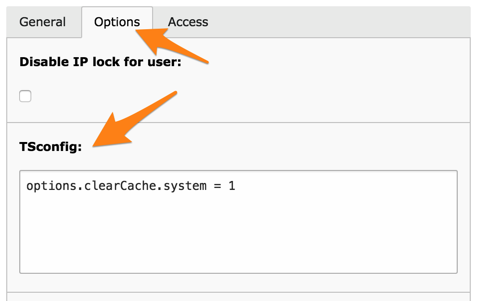TSconfig¶
TSconfig can be used in page (it is then referred to as "Page TSconfig") or for backend users and backend user groups (in which case it is known as "User TSconfig").
The Page TSconfig for any given page can be viewed using the WEB > Info module and choosing the "Page TSconfig" action.

There is no way to view User TSconfig.
While the objects, properties and conditions are different, the syntax of TSconfig is basically the same as it is for TypoScript in TypoScript templates, except for constants, which are not available in TSconfig.
The objects, properties and conditions, which are available in Page and User TSconfig, can be found in the TSconfig Reference.
Entering Page TSconfig¶
There are two ways to attach Page TSconfig to any given page. When editing a page, move to the "Resources" tab. The first way is to include a TSconfig file provided by an extension (new since TYPO3 CMS 7). The second is to directly enter code in the "Page TSConfig" field.

Page TSconfig is inherited along the page tree. Consider the TSconfig from the above screenshot:
mod.web_list.hideTables = sys_template
It means that we want to fully hide the "sys_template" table on the page where we defined this TSconfig and all of its child pages.
Page TSconfig is thus very convenient to have separate branches of the page tree behave differently.
Entering User TSconfig¶
User TSconfig is entered in the "TSconfig" field of either BE users or BE user groups records. For both, this field is located in the "Options" tab.

TSconfig defined at user-level is considered more relevant than TSconfig defined at group-level. Thus if the same property is defined both for a group the user belongs to and for the user itself, the value defined for the user will prevail.
If a user is member of several groups, the TSconfig from each group will simply be accumulated, identical properties from later groups taking precedence over definitions from earlier groups.